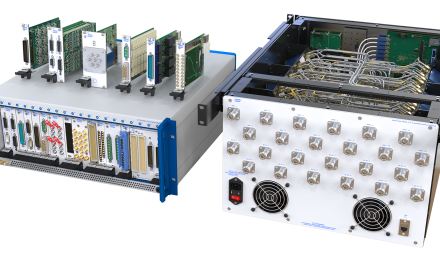 Mike Powers, Product Marketing Director for Gems Sensors and Controls uncovers how a powerful ASIC package and advances in CVD technology, pressure transducers are offering electronics designers some useful options
Mike Powers, Product Marketing Director for Gems Sensors and Controls uncovers how a powerful ASIC package and advances in CVD technology, pressure transducers are offering electronics designers some useful options
The testing of pressure transducers reveals some impressive statistics. These devices can deliver a high- level of accuracy with almost zero drift over time and an operating life in excess of 100 million cycles.
With such impressive levels of performance and resilience, pressure transducers have proved invaluable, particularly within applications where accuracy is vital to plant safety, or where equipment is difficult to access and it is therefore imperative to minimise maintenance and any necessary component replacement.
Pressure transducers can also be customised, offering designers a convenient and effective option that cuts costs when expensive and complex control technology is not needed.
In addition to all this, the latest pressure transducers can, as a result of their robust construction, be adapted for integration into many applications, such as the electronic circuits that precisely control the production of pressure transducers themselves.
A pressure transducer converts pressure, typically that of fluid or gas, into an electrical output signal. Inside a pressure transducer is a strain gauge sensor, mounted on the back of a stainless steel diaphragm, the face of which is in direct contact with the pressure media. Displacement of the diaphragm thus causes the strain gauge to flex, converting the information into electrical signals.
This offers the potential for sophisticated predictive control within a system. For example, a gradual decrease in pressure measured by a transducer might trigger a series of escalating alarm signals, allowing for appropriate action to be taken before the ultimate level is reached and an automatic shutdown is triggered. What’s more, pressure transducers can respond to changes in pressure within 1msec or less.
The latest pressure transducers achieve this level of performance thanks to an extremely sensitive pressure-sensing element combined with a sophisticated electronics package.
The electronic packages that have been supplied with pressure transducers over recent years have enabled each sensor to be tuned to meet the specific requirements of each customer. These packages incorporate advanced ASIC (application specific integrated circuits) technology, which enhances performance and functionality.
The arrival of ASICs with benefits
The introduction of ASICs has also brought a significant economic advantage, helping to cut the cost of transducers so dramatically that manufacturers can now sell at approximately £30 a sensor that offers the kind of functionality that would previously have cost £300.
The remarkable level of performance currently achieved by pressure transducers also owes much to the advanced strain gauge technologies of sputtered thin film and chemical vapour deposition (CVD).
Strain gauge sensors can be effectively manufactured using CVD technology, which is capable of producing compact devices that provide high- levels of accuracy with excellent hysteresis characteristics. CVD sensors can also be manufactured economically, since they are produced on wafers in large batches, using polysilicon deposited on a stainless steel substrate, with the strain gauge patterns being chemically milled.
Gems Sensors and Controls manufactures a range of highly versatile and resilient pressure transducers using CVD, including the 3300 Series. These devices have a wide range of outputs, electrical connections and pressure ports, with pressure ranges from 1 to 16bar, or 15psi to 200psi.
The transducers also offer a long operating life with good resistance to over pressure, while the high-temperature vacuum brazing of the stainless steel components during sensor production offers a strong and corrosion resistant structure with low hysteresis and creep.
Another highly effective technology in the production of transducers is sputtered thin film, a process whereby a solid target material is bombarded by energised particles, causing the material to release atoms. The atoms that are subsequently released are deposited in layers on a stainless steel beam, which is then etched and mounted on the reverse of a stainless steel diaphragm.
The application of the sputtered thin film layer during the manufacture of pressure transducers results in a sensitive, robust sensor that is suitable for direct contact with almost all liquids, oils and gases.
It is appropriate, and perfectly logical, that the exceptionally high-level of accuracy and repeatability offered by pressure transducers should be used within the manufacturing process that produces the components themselves.
Pressure monitoring is essential in semiconductor manufacture, where sensors are used to detect high exhaust pressure, which could indicate wafer-coating failures, or low exhaust output, which may reveal the presence of a gas leak in the exhaust line.
A pressure transducer can ably monitor such conditions and trigger an alarm when levels exceed set limits. Similarly, pressure transducers can monitor and control the stability of the CVD process by closely monitoring and controlling environmental pressure, a factor that significantly influences the rate of deposition.
The availability of such high performance components at affordable prices has enabled manufacturers to make these devices available to an ever greater range of specifications, which, in turn, has allowed more industries to incorporate them into their designs.
As with so many other applications, the benefits of building devices of such sensitivity with reliability over millions of cycles into electronic circuits are too obvious to ignore.Gems Sensors and Controls
Gems Sensors and Controls


